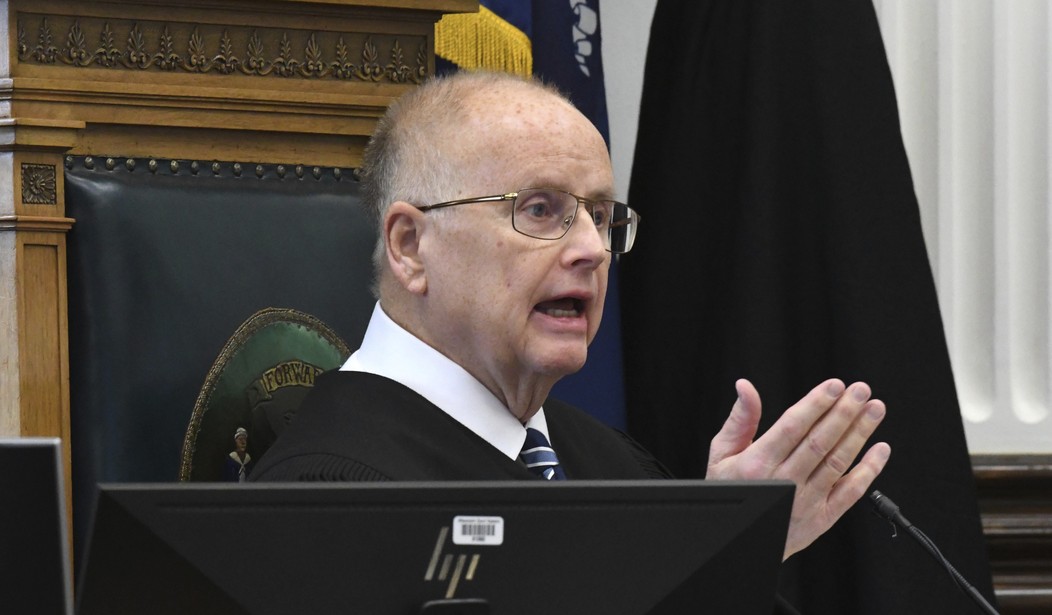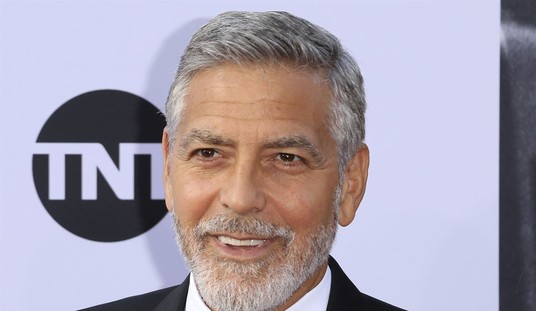As Ed pointed out earlier, a joke made by the judge during a break in the Rittenhouse trial became a big news story yesterday. I saw a number of people yesterday signaling on Twitter that the joke was a further sign justice would not be done in the trial. For example.
I'm sure he'll help administer impartial justice https://t.co/VZQWyUxi1D
— Tom Nichols (@RadioFreeTom) November 11, 2021
I’m not picking on Nichols in particular because he was just one of many, many people responding in this way. And I think those reactions say something important about what is going on here. A lot of people have been primed to believe this case was a simple story about a right-wing monster, but instead of an open and shut case it’s looking like the defense really does have a case for self-defense. Instead of revealing Rittenhouse as a cold-blooded killer who went to Kenosha to hunt protesters in the street, he seems more like a kid who got scared when a deranged homeless man singled him out and came after him.
That difference between expectations and reality is discomfiting to many people. It’s easier to make snarky comments about the judge’s bias swaying the trial than it is to admit the evidence is swaying the trial in ways that reveal some people’s pre-trial bias. In short, many people on the left just aren’t coping well with reality right now.
There’s a reason for that. It’s part of a long-established pattern at this point, one that goes back at least as far as the Trayvon Martin case. The problem starts with the media doing a poor job of relaying what actually happened. Of course I’m not the first or only person to notice this. Jesse Singal has been saying something like this since last August.
It has been particularly disturbing watching mainstream outlets ignore the fact that the chain of events which culminated in the two killings during the protests did, in fact, begin with someone chasing Rittenhouse and Rittenhouse looking back at the sound of gunfire to see someone lunging at him.
Vice, for example, ran this account by Tess Owen:
Hours later, after a confrontation between protesters and militia men, Rittenhouse opened fire, according to bystander video from the scene.
On Tuesday night, Rittenhouse joined up with a crew of pro-cop vigilantes and militiamen who had been standing guard by a gas station. He was shown on video palling around with police officers, who thanked him for being there and gave him a bottle of water — even though it was after the 8 p.m. curfew.
First he allegedly killed a protester, by shooting him in the head. Then he tried to run away, while talking on the phone: “I’ve just killed someone,” he said in video captured on a cell phone.
A crowd of protesters then chased Rittenhouse down a street, a scene captured from multiple angles on cell phones. He tripped, fell, and just as two protesters came toward him, he sat up, aimed, and opened fire. He appeared to shoot one person in the chest, killing them, and injured a second with a bullet to the arm.
It is depressing that this was published in a major news outlet. The single most important detail in any ambiguous shooting — what happened immediately prior — is left out entirely. Readers are kept ignorant (or maybe the better phrase is “protected from”) the reality of the initial shooting, which is that there is, at the very least, a non-ridiculous self-defense argument to be made. “Rittenhouse shot someone who was lunging at him after he heard a gunshot nearby” gets transformed to the more ideologically digestible “he allegedly killed a protester, by shooting him in the head.” This is one of those situations where a sentence is simultaneously true in a narrow, literal sense, and yet also deeply misleading.
Whereas Vice simplified things by simply not quite telling readers what happened, Slate took a different route: pretending the self-defense claim is some ridiculous, dangerous right-wing talking point rather than an at-least-arguably reasonable interpretation of events.
In that piece, Mark Joseph Stern, one of the site’s leading lights on legal issues, makes this argument: “Indeed, the argument for self-defense boils down to this: If civilians try to seize a weapon from a gunman who just shot somebody in the head, that gunman has a right to shoot them. If this theory were legally correct—thankfully, it isn’t—then a person who tries to grab a mass shooter’s gun may be legally killed by the shooter himself” (emphasis his). Of course this leaves out the crucial bit, which is that the first shooting may have been an act of self-defense.
In a second piece published last December he wrote this, pretty much predicting what we’re seeing now:
Many people are walking around with a false notion of what happened in Kenosha on August 25th in their heads. They have been misinformed by media outlets, pundits, and some politicians. That’s a problem because it leaves them ill-equipped to interpret whatever comes next. The outrage over his (very high) bail is one example. But other, bigger ramifications could ensue. Let’s say I’m right, the self-defense claim prevails, and Rittenhouse is subsequently acquitted of the most serious charges. For those of us who know and have absorbed the full facts, this won’t be all that surprising. For those whose view of the world is distorted by a fog of epistemic closure, it will be shocking, outrageous — He killed three people in cold blood! The only explanation for his acquittal will be white supremacy or some other corruption, because how else could a jury acquit such a monster? And this explanation will serve only to further reinforce people’s preexisting ideological and tribal commitments, driving them deeper into their worldview and toward pundits and journalists who see the world the same way they do. Epistemic closure is a one-way street.
Just yesterday, William Jacobson had a piece in the NY Post titled “The media framed Kyle Rittenhouse — and won’t come clean even after the prosecution’s case falls apart.” He argued that even as the trial is showing the pre-trial media accounts were misleading, the media is sticking with the original narrative in many cases.
From the media coverage leading up to the trial, one would think Rittenhouse was a white supremacist militia member who traveled to Kenosha to shoot up peaceful protesters.
But as has been widely documented, the case is going poorly for the prosecution. While I’m not predicting an outcome, having followed the case carefully, I can say that Rittenhouse has a strong case for self-defense…
The headline highlight of Grosskreutz’s testimony according to a Daily Beast report was that he “tried to surrender” to Rittenhouse. Similar misleading narratives frame the case at the New York Times, Washington Post, USA Today and elsewhere. Reading only these publications, it would be reasonable to believe the original story of Rittenhouse as a shooter run amok, despite the trial testimony to the contrary.
Ed noted another example of this yesterday where it seemed someone at CBS was jumping the gun a bit on the trial’s outcome. But I should add that not everyone is failing. CNN’s Jeffrey Toobin, of all people, actually got it right, though his delivery seemed to suggest he knew his message would not go over well with CNN’s audience.
All of this is significant because if Rittenhouse is acquitted or even partially acquitted, the difference between people’s expectations and reality could move some of them from snarky comments on Twitter to more riots in Kenosha and elsewhere. People are going to be angry not because the trial was truly unjust but because they were previously misled about the case by media outlets that intentionally framed this story in a way that wasn’t true.








Join the conversation as a VIP Member